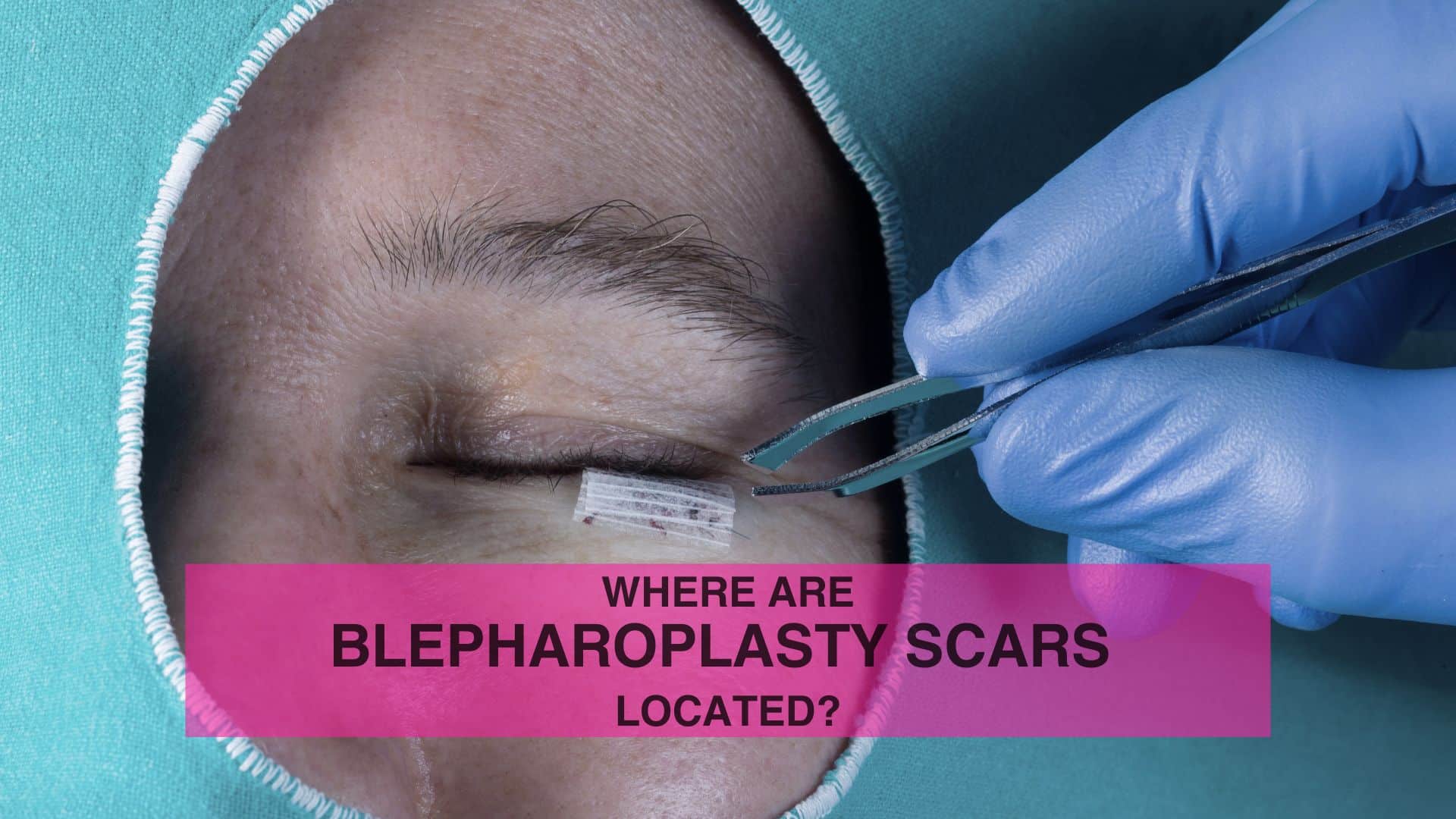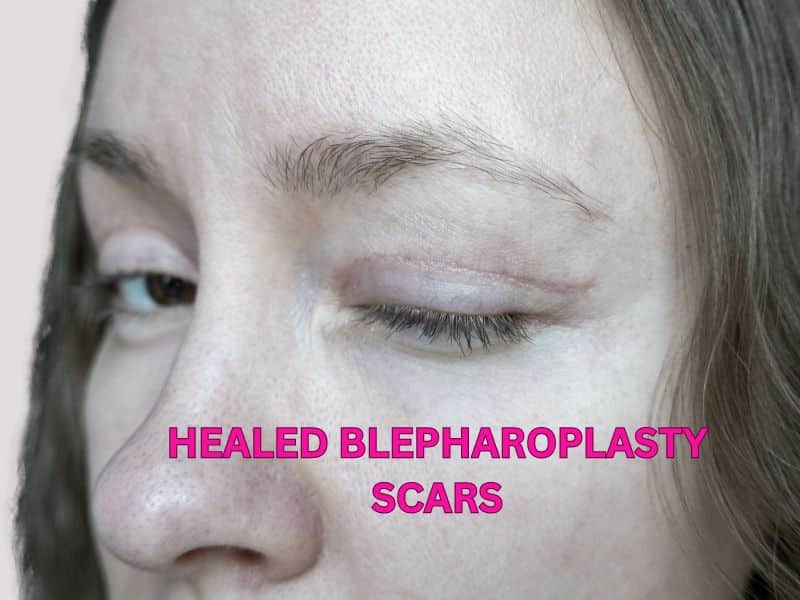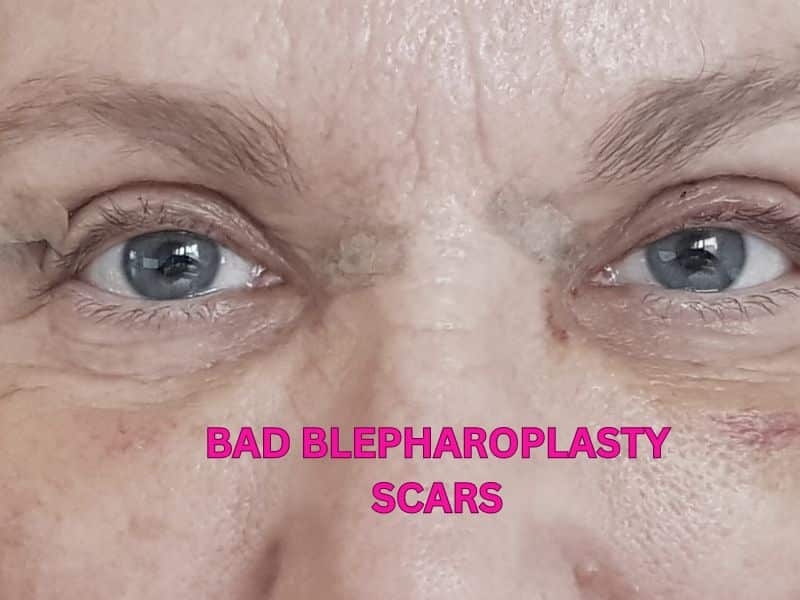Where Are Blepharoplasty Scars Located?
Written by: Dr. Dahlia Rice. Posted in: Blog

Patients who would obviously benefit from blepharoplasty surgery and who are great candidates for the procedure often have the most questions about blepharoplasty scars. This is definitely understandable. If you’re going to go through with surgery on your eyelids, after all, you certainly don’t want to end up with improved eye area contours and smoother skin — but noticeable scars.
To summarize scarring after eyelid surgery, upper blepharoplasty scars are typically located in the upper eyelid crease. Lower blepharoplasty scars are usually located just beneath the lower lash line or beneath the lower lid.
Beyond that, let’s explore a bit more about where blepharoplasty incisions are located and what you can expect from healed blepharoplasty scars.
Table of Contents
ToggleWhere Are Blepharoplasty Scars Located?
Blepharoplasty, or eyelid surgery, is a cosmetic procedure designed to improve the appearance of the eyelids by removing excess eyelid skin, fat, and/or muscle. One of the key concerns for patients considering this surgery is scarring. Naturally, patients want to minimize scarring whether they’re undergoing lower eyelid surgery, upper eyelid surgery, double eyelid surgery, or some variation of these.
The good news is, the natural folds of the eyelid (natural eyelid crease) can help to disguise incisions made during cosmetic eyelid surgery. That way, the patient ends up with minimal scarring in the first place, and any scars that are present after the healing process are barely noticeable.
Since we all have delicate eyelid skin, understanding where scars are located and how they heal is crucial for setting realistic expectations. Below, we’ll discuss both upper eyelid scars and lower eyelid scars after the recovery process for blepharoplasty cosmetic surgery.
Eyelid Surgery Scars
Upper Eyelid Scars
For upper eyelid blepharoplasty, the surgeon makes incisions along the natural crease of the upper eyelid. This placement helps to conceal the scar within the fold, making it nearly invisible once healed.
The surgeon removes or repositions excess skin and fat through this incision. Because the incision follows the natural contour of the eyelid, scars from upper blepharoplasty tend to be well-hidden, even when your eyes are open. With proper post-operative care, these scars typically fade and blend in with the surrounding skin within just a few months.
Lower Eyelid Scars
In lower eyelid blepharoplasty, the incision is made just below the lower lash line or sometimes, on the inside of the lower lash line. This placement ensures that the scar is discreet and easily concealed, often blending into the natural creases under the eyes.
Through this incision, the surgeon removes or repositions excess fat and skin to address under-eye bags and sagging. Because of the careful positioning of the incision, the resulting scar is usually difficult to notice after healing.
Scar Healing and Care
Although blepharoplasty scars are typically minimal and strategically placed to be as inconspicuous as possible, they still require proper care to heal optimally. Post-surgery, your surgeon will provide specific instructions for caring for the incision sites.
Here are some tips they may advise.
Keeping Incision Sites Clean
Proper hygiene is key to reducing the risk of infection and ensuring optimal healing of your scars. Follow your surgeon’s instructions on how to clean the incision sites, usually with mild soap and water. Be gentle when washing the area to avoid irritating the healing tissue, and always avoid rubbing your incisions.
Avoiding Sun Exposure
Sun exposure can cause scars to darken and become more noticeable. To prevent this, it’s important to avoid direct sunlight on the incision sites for several months after surgery. If you need to be outdoors, wear sunglasses and use a broad-spectrum sunscreen with a high SPF to protect the delicate skin around your eyes.
Using Scar Treatments
Your surgeon may recommend specific treatments to help minimize the appearance of scars, such as silicone gel sheets or scar creams. These treatments can aid in reducing scar thickness and improving their appearance over time.
Be sure to use only the products recommended by your surgeon and follow the application instructions closely.
FAQ: Blepharoplasty Scars
Blepharoplasty vs brow lift: What’s the difference?
Blepharoplasty surgery focuses on removing excess skin and fat from the eyelids to improve their appearance, while a brow lift elevates the eyebrows and smooths forehead wrinkles for a more youthful look. These procedures are sometimes combined.
What if I end up with lumpy scars after blepharoplasty?
Lumpy scars after blepharoplasty are usually caused by scar tissue. You’ll need to see your surgeon to discuss options for smoothing these bad blepharoplasty scars. This may include injections, massage, or a revision blepharoplasty surgery.
What surgery can help with hooded eyes?
Patients often undergo eyelid surgery for hooded eyes. This procedure can create a more distinct eyelid crease and remove excess skin that may be hanging over your eyes and causing you to look tired and groggy.
Schedule a Consultation Appointment
Want to learn more about where blepharoplasty scars are located and how noticeable they might be? It’s best to talk directly to a blepharoplasty surgeon.
These are normal concerns before blepharoplasty. Fortunately, board-certified plastic surgeon Dr. Dahlia Rice can walk you through the process and explain how careful incision placement reduces visible scarring. Dr. Rice has helped many patients achieve youthful, refreshed eyes with minimal signs of surgery.
Contact our practice today to schedule a consultation with board-certified cosmetic surgeon Dr. Rice for eyelid surgery.


